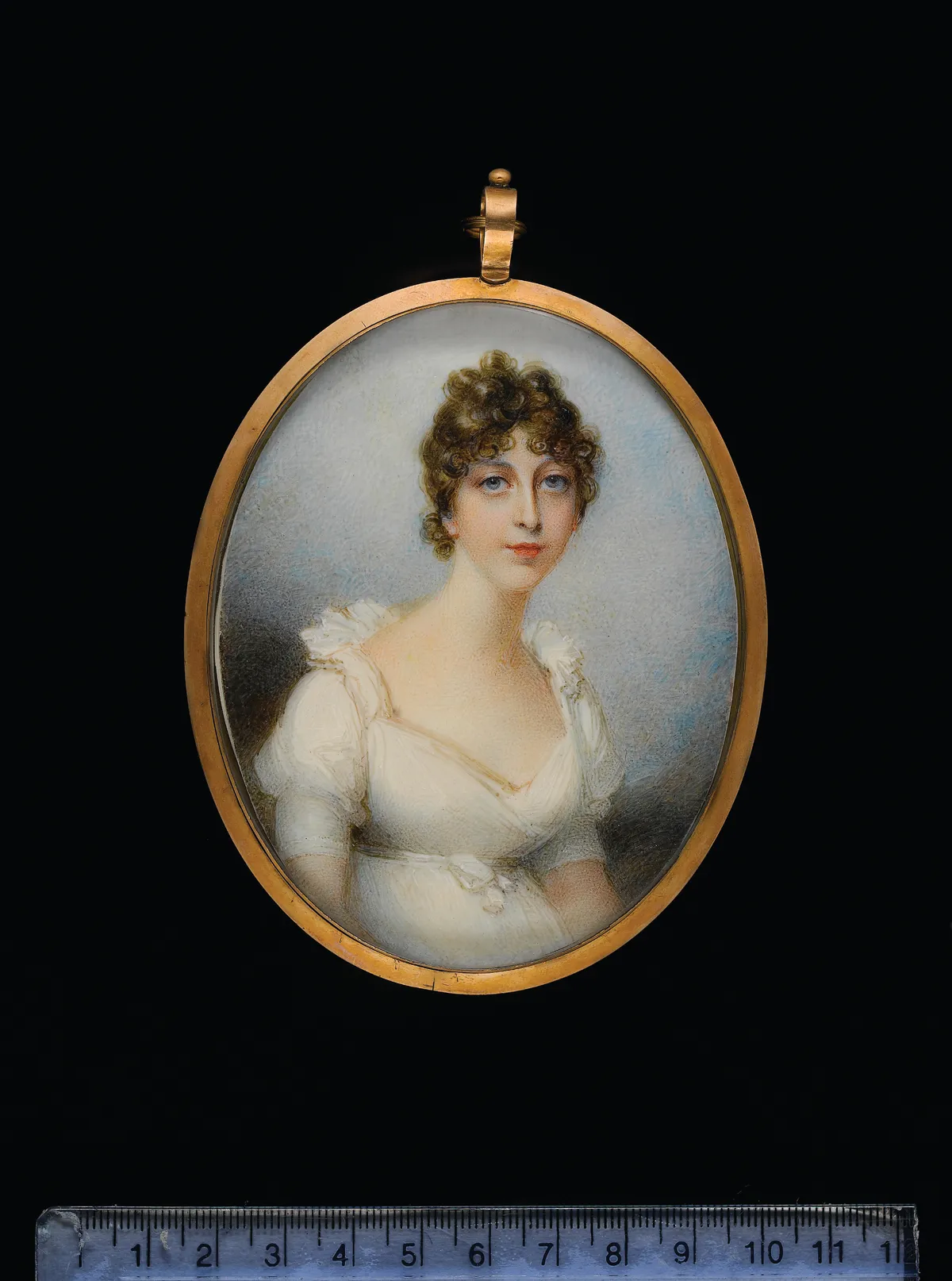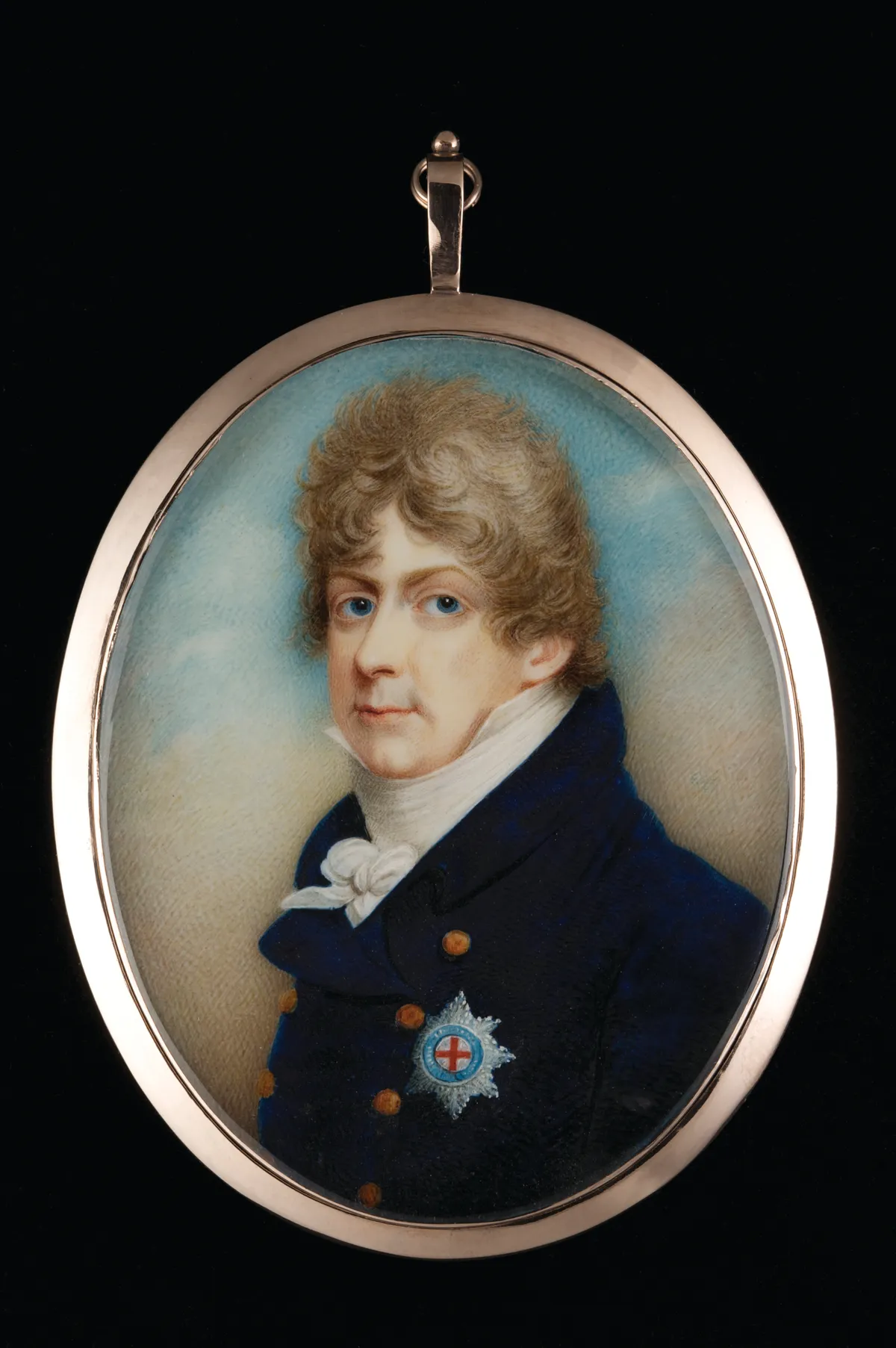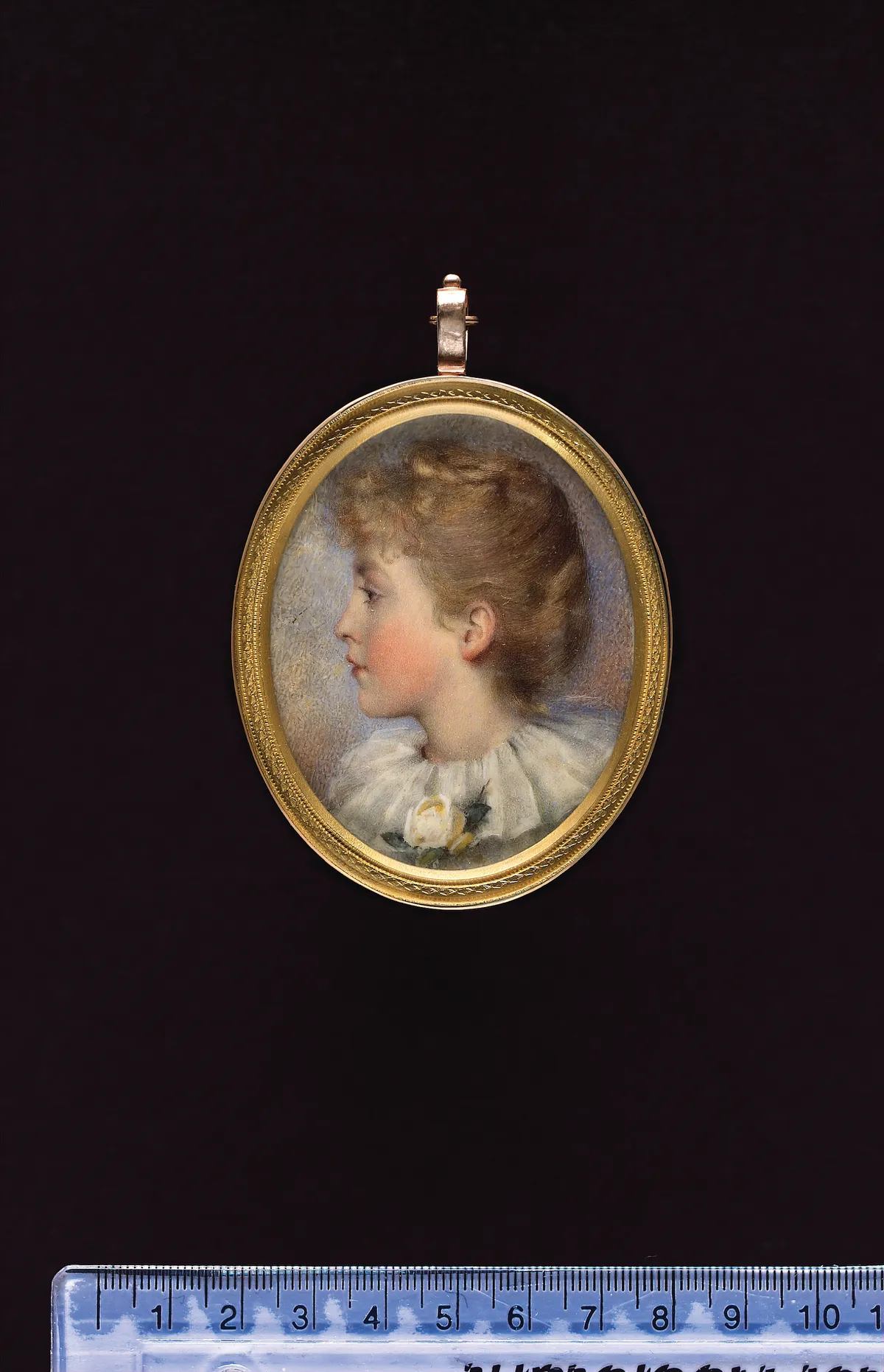When I was younger, I admit I was a bit scared of miniatures. Not because I had an unfortunate experience with one at an impressionable age – I just found them, well, so damn small. To me, they felt more of the realm of the jeweller than the art dealer – fiddly objects to be worn, kept in boxes, and occasionally pored over with a magnifying glass. Proper art they were not. That was until I started work on a television series on the history of British portraiture. It was a Damascene experience, during which I realised that some of the greatest moments in the story of the English face, some of the most enduring, revealing icons of our national history, are no more than a few inches high. Since then, I began to take a greater interest, which culminated last year with an exhibition at my London gallery in collaboration with the expert and author on portrait miniatures, Emma Rutherford. Now I can’t begin to fathom why it took me 15 years to understand their appeal.
When did portrait miniatures first come into existence?
Painted at both the French and English courts from the 1520s, no-one is sure of their exact origins. What is certain is that in the late 1530s, Henry VIII sent his trusted court painter, Hans Holbein the younger, over to the Duchy of Cleves to paint his possible future bride, Anne. The image Holbein produced (now in the V&A), was not a life-size oil painting, but a tiny watercolour on vellum (stretched and treated animal skin) – the Tudor equivalent of the photograph, and the most accurate image Henry could hope to have of the woman who would share his bed. Remarkably, although the miniature portrayed her as pale, dumpy and plain, Henry still married Anne of Cleves, whom he famously called his ‘Flanders Mare’. Less remarkably perhaps, the marriage was never consummated.
Why are they called miniatures?
You might think this is obvious, but actually, miniatures are not always small. The word miniature derives from miniare, which means ‘to colour with red lead’ – the type of paint used in manuscript illumination, largely for the dominant first letter, which often incorporated a portrait. Eventually, the fashion was for these portraits to be painted free of the manuscript, giving us portrait miniatures. It is only with association with words such as minor that ‘miniature’ has come to mean ‘small scale’.
That said, miniatures always refer to paintings in watercolour on vellum, or later, on ivory. Both take many hours to prepare, so the materials also dictated smaller dimensions.

What was their purpose?
From the beginning, miniatures were thought of as intimate, handheld, often portable objects, only designed to be seen by three pairs of eyes – the artist, patron and sitter, and used to facilitate and celebrate marriages, commemorate births and mourn the dead. Easy to transport, they were the perfect accessories for secret political intrigues and love affairs. During the 18th century, for example, men would wear miniatures disguised as pocket watches, often hiding the portrait of a mistress inside.
Were they worn or displayed?
The majority of miniatures were made to be worn as jewels, so the paintings were usually housed in precious settings. Generally speaking, the more expensive the setting, the better the quality of the portrait miniature. ‘Cabinet Miniatures’, larger miniatures popular at court in the 17th century, were intended to be hung in a cabinet or ‘treasure room’. Later, in the 19th century, portrait miniaturists expanded this idea and produced larger ‘miniatures’ designed to be framed as small pictures. By this time, ivory was used as a base for the watercolour and artists spent a lot of time working out how to take larger swathes of ivory from the tusk or how to splice pieces together.
How can I date my miniatures?
Miniaturists began to explore painting on ivory, rather than the traditional vellum, from around 1700, and this is a useful date to remember – a 16th-century noblewoman could not have been painted on a slice of ivory. Aside from materials, a basic knowledge of fashion is incredibly helpful for the collector, because so few examples are actually dated.
Because most miniatures show just the ‘bust’ of the sitter, hairstyles, hats and wigs are the most useful starting point. From the middle to the end of the 18th century, women’s hair underwent enormous changes – running from the long, natural styles with pearls or ribbons of the 1750s, to the extreme heights and elaborate decorations of the mid 1770s. In the 1780s, hairstyles became wider, rather than higher, and hats became more popular. It is worth remembering that portrait miniatures painted outside the major cities, or of older sitters, often show fashions that were rather out of date.
The ‘powder tax’, levied in 1795, is another key date. Only those who had paid an annual tax were allowed to powder their hair, resulting in a trend for ‘natural’ hair.
How can I start a collection and what should I expect to pay?
Many enthusiasts choose to build a collection around a theme (there’s no denying that pretty young ladies and handsome officers are particularly popular) or around an artist. Price is heavily dependent on condition – unlike a robust oil painting, it is rare for a watercolour to weather well.
The first painter to establish miniatures as a peculiarly British form of portraiture was Nicholas Hilliard (c1547-1619), who worked for Elizabeth I. Miniatures by Hilliard still come up at auction, with prices ranging from £10,000-£250,000 and upwards.
In the 17th century, miniatures began to move away from the rather flat manuscript style and artists such as Samuel Cooper (c1608-1672) made their sitters appear much more lifelike. Good miniatures by Cooper and his contemporaries cost upwards of £5,000.
The 18th century is usually termed the ‘Golden Age’ of the portrait miniature, with artists using the luminous qualities of ivory to its full advantage, and the paintings housed in elaborate lockets with swirls of human hair on the reverse. Names to look out for include Richard Cosway, Andrew Plimer, George Engleheart, William Wood, John Smart, Richard Crosse and Jeremiah Meyer. Well-painted examples in good condition by these artists start in the low £1,000s, but lesser examples start at around £500. Collectors can buy excellent portraits by less well-known artists for a few hundred pounds, but beware of anything by the major names for this price – many fakes were painted in the early 20th century. Because relatively few miniaturists ever signed their work, beginners are best relying on reputable dealers or specialised auction house departments.
19th-century miniatures, with their rectangular ivory and ‘picture frame’ settings, are less popular than the jewelled 18th century settings and usually represent good value. The artist Andrew Robertson and his assistant Sir William Charles Ross dominate this period. Prices start from about £400, but really good examples can make up to £3,000.
How should I display my collection?
Most people show off their miniatures in vitrines or wall cabinets. Heat and light are the main enemies, so steer clear of radiators, fireplaces and windows. If you wish to hang them directly on the wall, choose an interior wall to avoid damp.
TOP OF THE TREE
George IV as Prince of Wales (1762-1830) by Richard Bull (1777-1809). Gold frame, the reverse with old collection labels and signed ‘R Bull/1805/101 Pall Mall’. Price: £2,000

This portrait of George, Prince of Wales, was painted in 1805 in watercolour on ivory by Richard Bull, an Irish artist who arrived in London about 1790. Bull usually signs on the front of his miniatures, but in this case he has signed the reverse with his London address in smart Pall Mall. Like his fellow artists, Bull has attempted to flatter the flamboyant but lazy George – by 1797 he weighed 17 stone and 7 pounds, so Bull has slimmed him down considerably! This is a well-painted example, in good condition, clearly signed and dated by the artist, of an important and influential character of the day, hence the price.
AN INVESTMENT
Portrait miniatures don’t suffer the sweeping rises and falls of other more volatile areas of collecting. Good examples, particularly those by the better-known artists, or of royalty, hold their value well. Edwardian portrait miniatures, in particular, show little sign of waning popularity. After the invention of photography in the mid 19th century, portrait miniatures became less fashionable. There was a revival in the early 20th century, which produced many well-painted and charming examples on ivory. This portrait by Mabel Lee Hankey (1863-1943), for example, was bought for £450 in 2001, and in 2006 made over £1,900 at auction.

WHERE TO SEE & BUY
- V&A, Cromwell Road, London.020 7942 2000
- Scottish National Portrait Gallery, Queen Street, Edinburgh. 0131 624 6200
- Wallace Collection, Hertford House, Manchester Square, London. 020 7563 9500
- Royal Miniature Society details contemporary miniature artists
- Bonhams (101 New Bond Street, Mayfair 020 7629 6602) is the only auction house with two annual sales dedicated to miniatures. The next sale takes place on 20th May 2009
- Philip Mould Gallery, 29 Dover Street, London 020 7499 6818
- Judy & Brian Harden P.O. Box 14, Bourton-on-the-Water, Cheltenham 01451 810684
